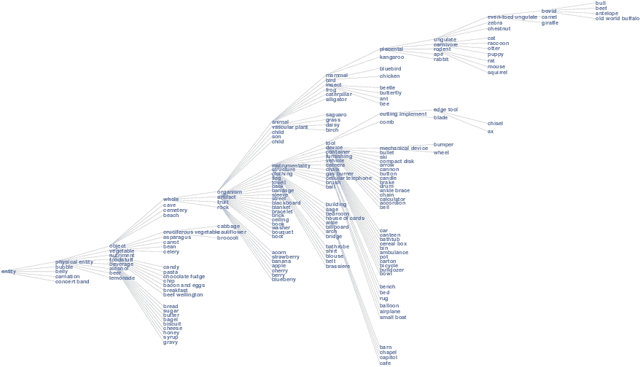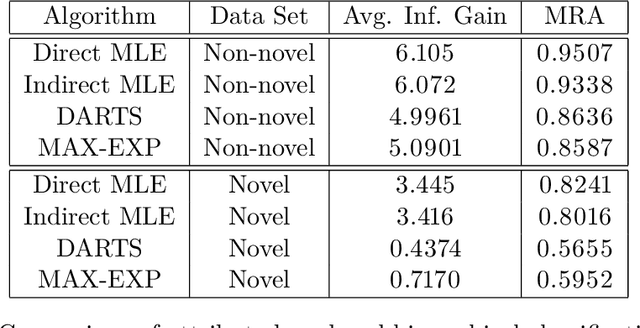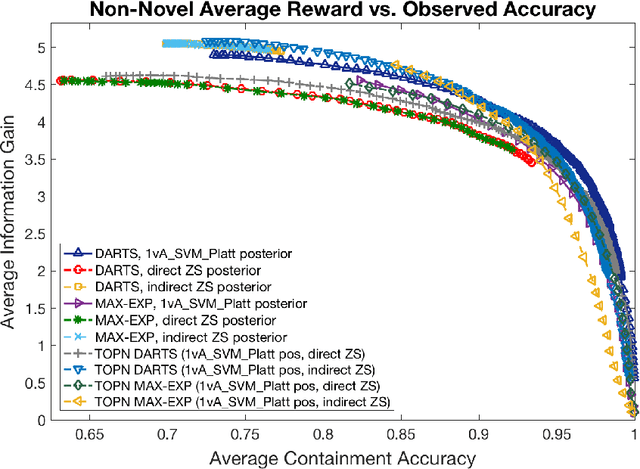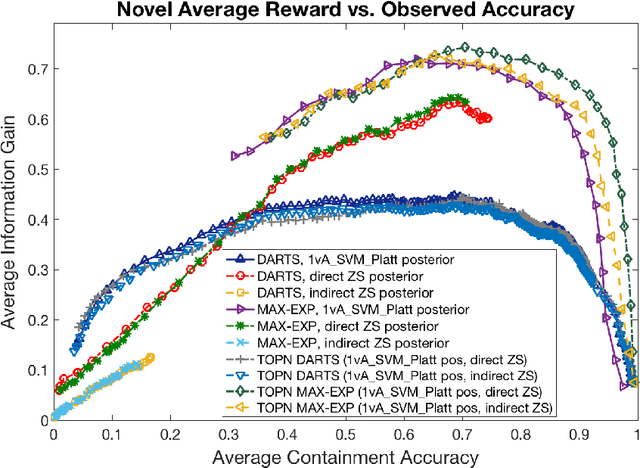Combining Deep Universal Features, Semantic Attributes, and Hierarchical Classification for Zero-Shot Learning
Paper and Code
Dec 08, 2017



We address zero-shot (ZS) learning, building upon prior work in hierarchical classification by combining it with approaches based on semantic attribute estimation. For both non-novel and novel image classes we compare multiple formulations of the problem, starting with deep universal features in each case. We investigate the effect of using different posterior probabilities as inputs to the hierarchical classifier, comparing the performances of posteriors derived from distances to SVM classifier boundaries with those of posteriors based on semantic attribute estimation. Using a dataset consisting of 150 object classes from the ImageNet ILSVRC2012 data set, we find that the hierarchical classification method that maximizes expected reward for non-novel classes differs from the method that maximizes expected reward for novel classes. We also show that using input posteriors based on semantic attributes improves the expected reward for novel classes.
 Add to Chrome
Add to Chrome Add to Firefox
Add to Firefox Add to Edge
Add to Edge